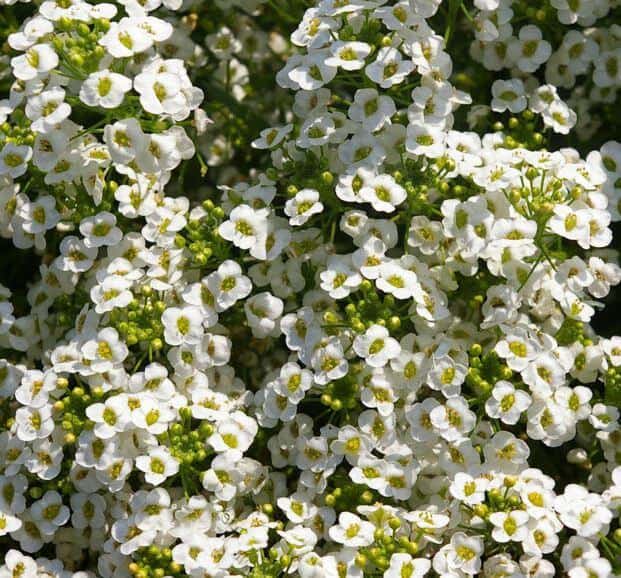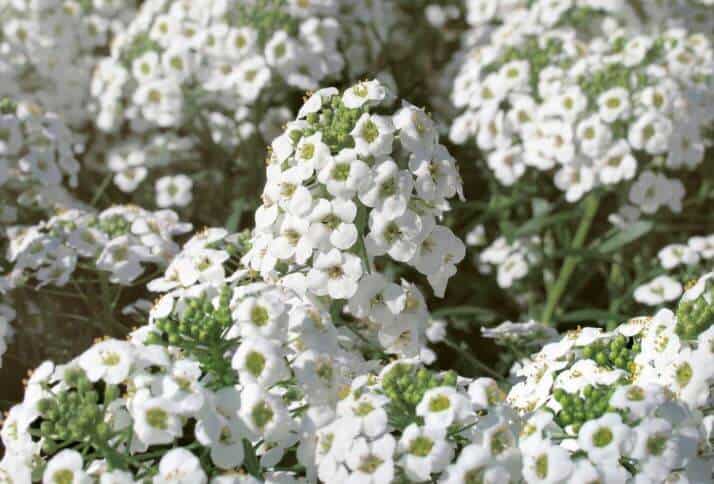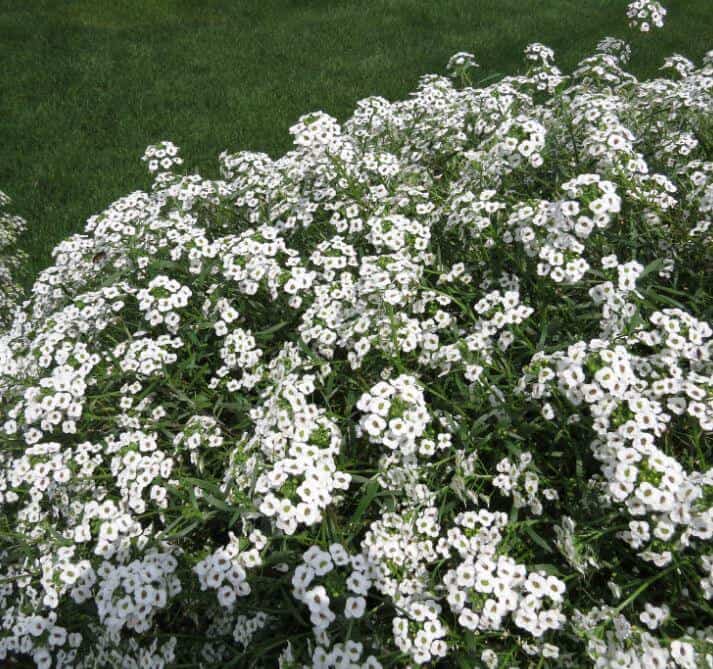Last Updated on January 6, 2023 by a Friendly Gardener
Snow Princess ‘Lobularia’ is a resilient plant that can easily be grown at home or in your garden. The wonderful-smelling plant grows up to six inches in height and five feet in length. It captivates with its honey-like strong scent and clusters of petite white flowers.
Native to Macaronesia and the Mediterranean region, Snow Princess is an annual plant. It can be planted along the edges of the garden or placed in hanging baskets at home.
If you are looking for a guide on Snow Princess plant care, you have come to the right place. This article will cover everything you need to know.
Snow Princess Plant Care

The Snow Princess ‘Lobularia’ plant is an excellent choice to add to your garden lineup. If proper care is bestowed upon the plant, you will be rewarded with petite white blooms with a honey-like fragrance.
It self-sows, providing continuous blooms year after year without requiring much maintenance on your part.
Sunlight
This Lobularia thrives in ample amounts of sunlight but dislikes a prolonged period of dryness. If you reside in a sweltering dry environment, you will need to protect the plant from the midday sun.
The plant stands to grow well under full sunlight or even partial shade. Make sure you plant the Snow Princess somewhere it can receive at least six hours of sun every day.
If the plant does not get sufficient sunlight, it is at risk of developing blight or stem problems.
Water

Generally, Lobularia requires at least an inch of water per week. You will need to up the frequency of watering during dry spells or hot sunny days. If you are growing the plant in your garden, maintain a watering pattern according to the rainfall.
Make sure you do not overwater the plant. It does not tolerate soggy soil. Make sure the water is able to drain well. Before watering an indoor potted Snow Princess, make sure the top layer of the soil is dry.
If you have planted it in a stony landscape, you will need to feed it extra water. For a potted plant, make sure the container does not retain water. Excess water can lead to problems like root rot and a general decline in growth.
Soil
When grown in the garden or in containers, this plant prefers moist and well-draining soil. Loamy and rich soil is the most preferred. It does not appreciate poor draining or boggy soil.
The plant is tolerant to a variety of planting locations and is often found growing naturally on sandy dunes and beaches.
Though the plant favors neutral soil and a pH between 6.5 to 7.3, it can tolerate slight alkaline or acidic soils as well.
Temperature
The garden plant’s native habitat has naturalized it to a temperate climate. It is quite a hardy plant.
The optimum growing temperature for the Snow Princess lies between 50 to 79°F. However, they can grow without fuss at temperatures of up to 93°F. The plant cannot survive lower temperatures for long and can only tolerate light frosts.
Fertilizer
If your garden soil is already nutrient-rich, you will not have to additionally feed the Snow Princess. However, additional nourishment is not discouraged. With some extra plant food, the plant will have quicker growth and better blooms.
If you are growing the plant in a pot or container, you will need to water and feed it on a regular basis. Provide the soil with a balanced liquid fertilizer every three weeks or every month. This is especially critical during the growing season.
When initially planting the Snow Princess, enrichen the soil with organic compost or some slow-release fertilizer to give the sprout a boost.
Pruning

Deadheading the plant ensures the plant keeps flowering vivid and fragrant buds throughout the growing season. Once the flowers begin to fade or become leggy, shear at least one-third of the growth. It is much easier to do than deadheading. It will keep the plant neat and trimmed.
The plant will re-seed itself, so you do not have to worry about losing growth. Make sure you disinfect the pruning tools before getting to work and after you are done. This will minimize the risk of cross-contamination with unknown pathogens.
Planting

While you can grow the Snow Princess with seeds, it is easier to use seedlings. Seedlings have assured growth, unlike seeds, and they bloom faster. You can easily find seedlings for the Lobularia variety across nurseries and garden stores.
If planting in your garden, get your seedlings in early spring and transplant them at half-inch intervals. If you want to start with seeds, simply scatter them in the soil and press down. Make sure the seeds have partial exposure to the light and the substrate.
In order for the seeds to germinate, the temperature will need to be around 59°F. Maintain a constantly moist soil until the seeds sprout. If you want to grow them outside, plant the seeds or the seedlings after frosts. You can also start their growth indoors and then transplant them into the garden.
Propagation

It is quite easy to propagate the Snow Princess plant. Since it is self-sown, you simply have to collect seeds from the mature plant at the close of the blooming season and follow the planting instructions mentioned above.
You can also plant stem cuttings in clean, moist soil in late spring or early fall. However, it is usually not propagated in this manner.
The Bottom Line
The Snow Princess ‘Lobularia’ plant is an annual hybrid with a sweet-smelling flowing mass of white flowers. It requires minimal maintenance and continues giving when its basic requirements are met.
The hardy garden plant loves sunlight, has normal water requirements with increased need during higher temperatures, and thrives in neutral soil. It also needs to be fed a balanced plant feed during the blooming period.
You will need to prune the plant once it starts becoming leggy and ensure you do not overwater it to prevent problems like root rot. As long as you keep these basics in check, the beautiful plant will keep blooming for seasons to come.


